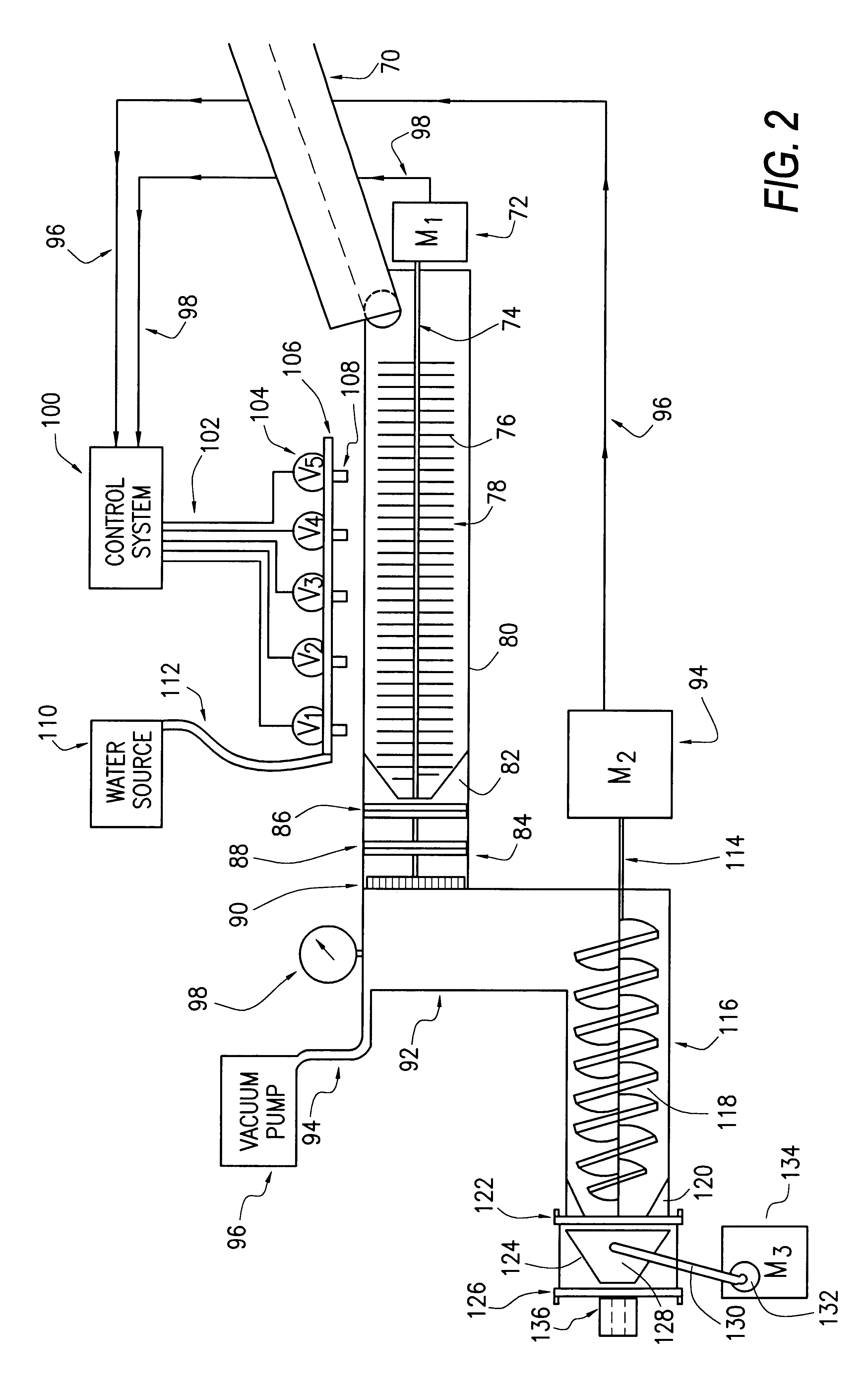Vacuum extrusion system for production of cement-based articles
a technology of extrusion system and cement-based articles, which is applied in the field of extrusion concrete articles, can solve the problems of inability to reliably make articles that meet the specifications of conventional molded concrete, and inventors are unaware of commercially successful procedures, so as to reduce the amount of horse power to extrude, reduce the friction, and reduce the moisture content
- Summary
- Abstract
- Description
- Claims
- Application Information
AI Technical Summary
Benefits of technology
Problems solved by technology
Method used
Image
Examples
example 1
In this example, certain feed mixture blends were formed for testing purposes. The first one (Blend #1) was formed into extruded articles where the feed mixture was composed of 10 wt % Portland cement, Type I-P, 40 wt % Class F flyash, 20 wt % concrete sand, 30 wt % pea gravel (3 / 8" maximum size), iron oxide pigment (3% of cement weight maximum), water (10 wt % of total dry weight maximum) and plasticizer (4 wt % of water weight maximum). Another blend (Blend #2) was identical to Blend #1 except that 15 wt % Portland cement and 35 wt % Class F flyash were used. Blend #3 was identical to Blend #1 except that 20 wt % Portland cement was used and 30 wt % Class F flyash was used. Blend #4 was composed of 10 wt % Portland cement, Type I-P, 40 wt % Class F flyash, 50 wt % cinder bottom ash, iron oxide pigment (3% of cement weight maximum), water (15 wt % of total dry weight maximum) and plasticizer (4 wt % of water weight maximum). Blend #5 was identical to blend #4 except that 25 wt % ci...
example 2
In this example, selected feed mixture blends described in Example 1 were formed into paving bricks using vacuum extrusion in accordance with specific aspects of the invention, and the bricks were tested for compressive strength under ASTM C 67, with the following results, indicating properties comparable to molded bricks.
example 3
In this example, the same feed mixture blends described in Example 1 were formed into paving bricks, as in Example 2, and were then tested for 24-hour cold water absorption capacity, with the following results.
PUM
| Property | Measurement | Unit |
|---|---|---|
| pressure | aaaaa | aaaaa |
| pressure | aaaaa | aaaaa |
| density | aaaaa | aaaaa |
Abstract
Description
Claims
Application Information
 Login to View More
Login to View More - R&D
- Intellectual Property
- Life Sciences
- Materials
- Tech Scout
- Unparalleled Data Quality
- Higher Quality Content
- 60% Fewer Hallucinations
Browse by: Latest US Patents, China's latest patents, Technical Efficacy Thesaurus, Application Domain, Technology Topic, Popular Technical Reports.
© 2025 PatSnap. All rights reserved.Legal|Privacy policy|Modern Slavery Act Transparency Statement|Sitemap|About US| Contact US: help@patsnap.com



